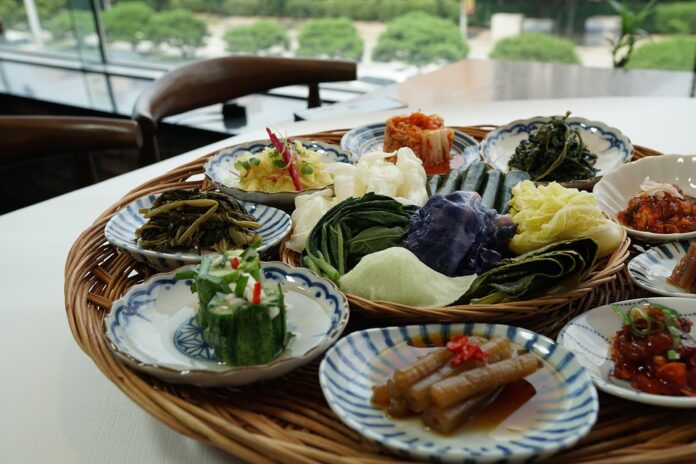Health and Wellness Trends: How Korean Restaurants Are Meeting Consumer Demands
The health and wellness industry is booming, with consumers increasingly prioritizing their well-being and seeking out healthier dining options. Korean cuisine, known for its use of fresh ingredients and balanced flavors, has been gaining popularity among health-conscious consumers. Korean restaurants are adapting to this trend by offering dishes that cater to a variety of dietary preferences and restrictions, making them a popular choice for those looking to eat well without sacrificing taste.
Consumer Demand for Healthier Dining Options
In recent years, there has been a significant shift in consumer preferences towards healthier dining options. According to a report by Technomic, a food industry research firm, 64% of consumers say they are more likely to visit a restaurant that offers healthy menu options. This trend is particularly evident among millennials and Gen Z consumers, who are driving the demand for healthier, more nutritious food choices.
Korean cuisine, with its emphasis on fresh vegetables, lean proteins, and fermented foods, aligns well with these consumer preferences. Dishes like bibimbap, kimchi, and bulgogi are not only flavorful but also packed with nutrients and antioxidants. Korean restaurants are capitalizing on this trend by offering a wide range of healthy options on their menus, including vegetarian and gluten-free dishes.
Meeting Dietary Preferences and Restrictions
One of the key ways Korean restaurants are meeting consumer demands for healthier dining options is by accommodating a variety of dietary preferences and restrictions. Many Korean restaurants offer customizable options, allowing customers to choose their preferred protein, vegetables, and sauces. This flexibility makes it easy for diners to create a meal that meets their specific dietary needs.
In addition, Korean cuisine includes a variety of dishes that are naturally gluten-free, making it a popular choice for those with gluten intolerances or celiac disease. Kimchi, a fermented vegetable dish that is a staple in Korean cuisine, is also known for its probiotic properties, making it a healthy choice for those looking to support their gut health.
Incorporating Superfoods and Functional Ingredients
Another way Korean restaurants are meeting consumer demands for healthier dining options is by incorporating superfoods and functional ingredients into their dishes. Superfoods like seaweed, gochujang (fermented chili paste), and ginseng are commonly used in Korean cuisine for their nutritional benefits.
These ingredients are not only packed with vitamins and minerals but also have various health benefits, such as boosting immunity, improving digestion, and reducing inflammation. By including these superfoods in their dishes, Korean restaurants are able to offer customers a delicious and nutritious dining experience.
Industry Insights and Financial Data
The health and wellness trend in the restaurant industry is expected to continue growing in the coming years. According to a report by Market Research Future, the global healthy eating trend is projected to reach a market value of $1.04 trillion by 2023, driven by increasing awareness of the importance of a healthy diet.
Korean restaurants are well-positioned to capitalize on this trend, thanks to their emphasis on fresh ingredients, balanced flavors, and health benefits. As consumer demand for healthier dining options continues to rise, Korean restaurants that offer a variety of nutritious and flavorful dishes are likely to see an increase in sales and customer loyalty.
In conclusion, Korean restaurants are meeting consumer demands for healthier dining options by offering a wide range of nutritious and flavorful dishes that cater to various dietary preferences and restrictions. By incorporating superfoods and functional ingredients into their menus, Korean restaurants are able to provide customers with a unique and satisfying dining experience that promotes overall health and well-being. As the health and wellness trend continues to grow, Korean restaurants are poised to become even more popular among health-conscious consumers looking for delicious and nutritious meal options.




